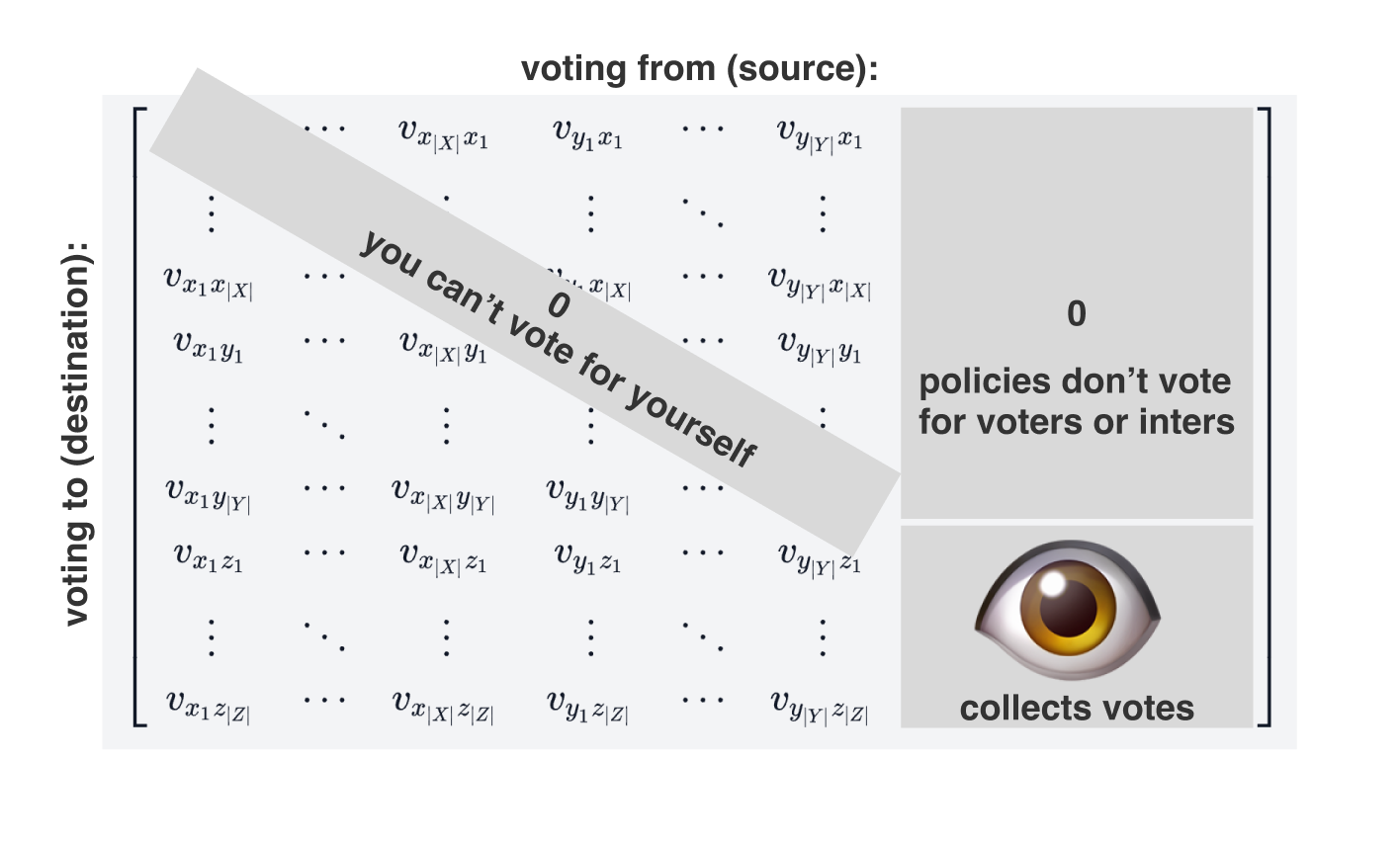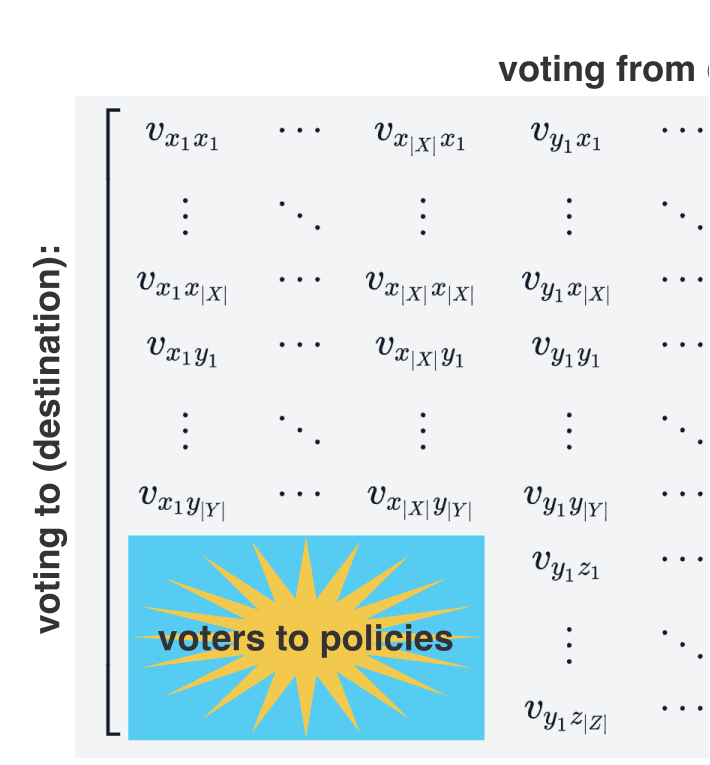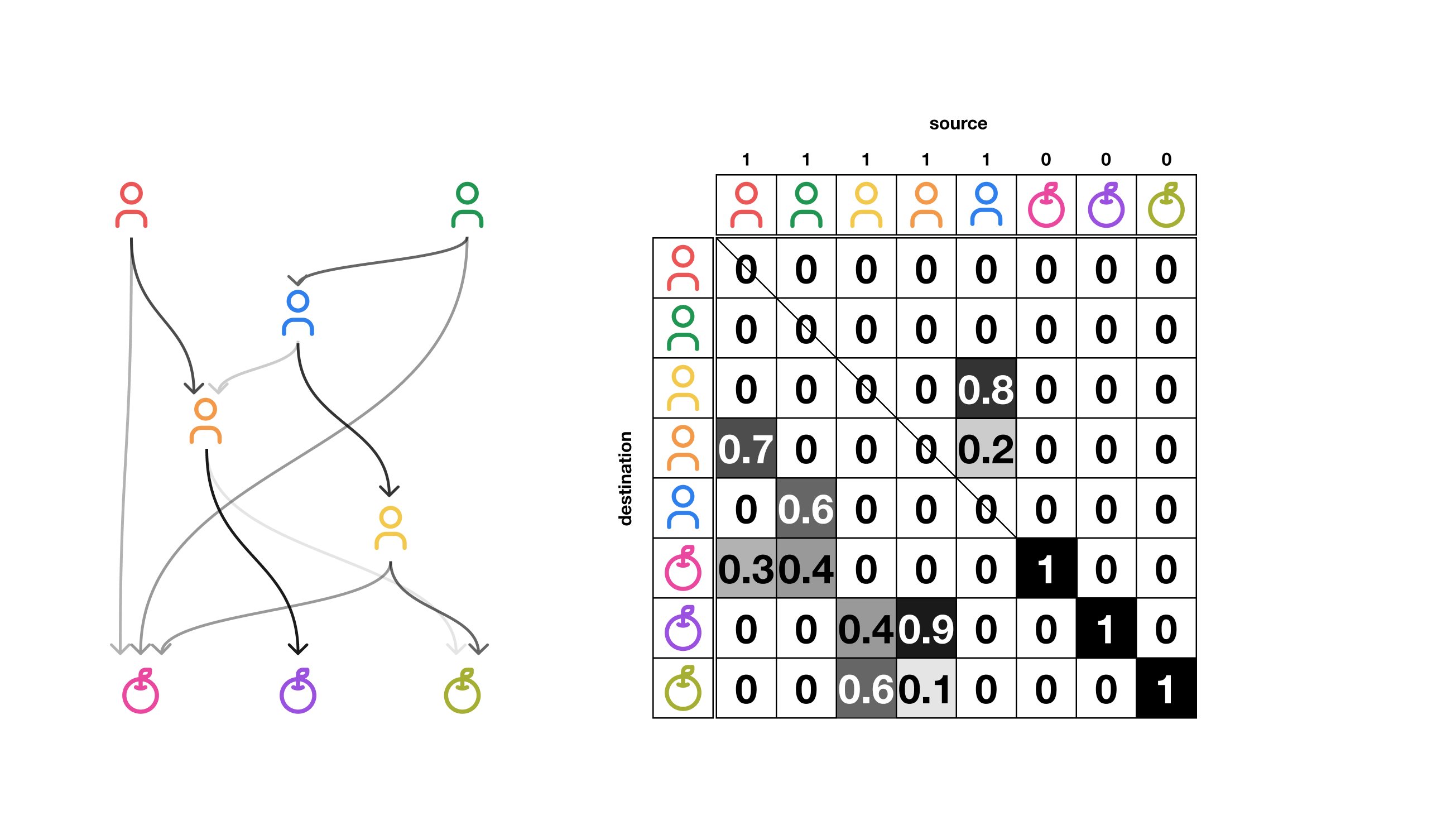the “Nameraka” (なめらか) Society and it’s enimies. (Suzuki, Ken, 2013)
The title comes from “The open society and its enimies (Popper, Karl R, 2020)”
key concepts
- “Nameraka” - smoothness like a sigmoid function1, bad things happen when the phase change of society is abrupt, is there a better way? Norway and Sweden 2(Jacobs, Jane, 2016)
- The atom and the membrane. The tendency to centralize power and define boarders. We can see this in inter-national, society, group, individual, and even in biology.
- PICSY (a currency system) and Divicracy (or Propagational Proxy Voting).
Part III, Divicracy
chapter 6: To individual democracy to dividual democracy
- limits of direct democracy
- low turnout
- limits of representative multi-layered democracy
- can we make a hybrid?
Deleuze first used the term dividual (Gilles Deleuze, 1992), to point out that in a society of control3 the individual/mass comparison does not work anymore, this is the dividual that matter or the way we look about identies.
basically say that we are already used to divide our identites according to that specific occation. Which is super natural after internet.
- There are scholars divide identites in the time dimention, where is this dividing identity in the spatial dimention?
- Our identites are fragmented (Bhabha, Homi K and others, 1995)
- Bundle theory (Hume, David, 2000)
- Liquid Democracy: very close Idea
below is taken from Blum and Zuber’s (Blum, Christian and Zuber, Christina Isabel, 2016) formalization of Liquid Democracy.
- directly vote on all policy issues (direct democratic component);
delegate their votes to a representative to vote on their behalf on
(1) a singular policy issue, or (2) all policy issues in one or more policy areas, or (3) all policy issues in all policy areas
(flexible delegation component);
- delegate those votes they have received via delegation to another representative (meta-delegation component);
- terminate the delegation of their votes at any time (instant recall component).
The core distiction is this is referring to several policies.
but not fractional voting.
but is liquid democracy “representative”, “democratic”, “legitimite”? (Landemore, H{\'e}l{\`e}ne, 2020)
We are familiar with electoral representation, what other forms of democratic representative is out there.
- lottocratic
- self-appointed (only if its open to everyone)
is electoral representation open? secure4?
chapter 7: Propagational Proxy Voting (PPV)
- example: Deciding what to eat for breakfast
As a family we need to decide what to have for breakfast. The options are Rice or Bread.
- Minori put 0.1 points to Yasushi and Ray to deicide, and voted directy 0.1 and 0.7 points respectively to Rice and Bread.
- Yasushi voted 0.2 points to Minori and 0.3 points to Ray. He gave half of his vote to Rice.
- Ray gave 0.4 points to her parents and gave the remainder for eating Bread.
Some points to consider :
- Minori contradics. She is giving 0.1 points to rice while giving it 0.7 to bread.
- Yasushi is the only one directly voting for Rice
- Ray has limited knowledge and may not know how Rice tastes.
- Voting matrix
The Voting Matrix (\(V\)) will be:
- Minori Yasushi Ray * Rice * Bread Minori 0.0 0.2 0.4 0.0 0.0 Yasushi 0.1 0.0 0.4 0.0 0.0 Ray 0.1 0.3 0.0 0.0 0.0 * Rice 0.1 0.5 0.0 1.0 0.0 * Bread 0.7 0.0 0.2 0.0 1.0 \[ \ \begin{bmatrix} \ 0.0 & 0.2 & 0.4 & 0.0 & 0.0 \\ \ 0.1 & 0.0 & 0.4 & 0.0 & 0.0 \\ \ 0.1 & 0.3 & 0.0 & 0.0 & 0.0 \\ \ 0.1 & 0.5 & 0.0 & 1.0 & 0.0 \\ \ 0.7 & 0.0 & 0.2 & 0.0 & 1.0 \ \end{bmatrix} \]
- results:
Plan Votes Rice 1.1725 Bread 1.8275 so we have
Breadthis morning.- influences:
Representative influence Minori 11.0 Yasushi 4.625 Ray 3.5 Minori has the most influence for deciding breakfast.
- Extention: Intermediaries
Other than delegating to humans, we can think of delegeting to categories or parties, which usually a combination of policies or delegates. For instance when deciding dinner, there might be options like
Sushi, Ramen, Tacos, but I might be indifferent between the two Japanese dishes. in other words:\[ \textrm{sushi} \sim \textrm{ramen} \succ \textrm{tacos} \]
We can express political parties if it splits the votes to the party members. Or another way to use this is deciding songs, we usually have the option to choos between songs, albums, artists, genres or eras. But this can lead to a whole new can of worms, when we can vote to vote results, since a vote result is just a intermediary that holds some weights….
- Math
based on (Suzuki, Ken, 2013) pp 141-148 the book shows a situation where there is only policies and voters(or delegates), here we elaborate to incorporate intermediaries.
Given a set of voters \(X = \{x_1, \cdots, x_{|X|}\}\) and intermediaries, \(Y = \{y_1 ,\cdots , y_{|Y|}\}\), and policies \(Z = \{z_1, \cdots, z_{|Z|}\}\). The total set will be \(S = \{s_1, \cdots, s_{|X \cup Y \cup Z|}\}\). Each element \(s_i\) will have a value pointed to elements in \(\{s_j \in S\}\) this could be frankly refered as votes from other nodes (\(v_{ij}\)). this will form a voting matrix \(V\):
\begin{bmatrix} \ v_{XX} & v_{YZ} & v_{ZX} \\ \ v_{XY} & v_{YY} & v_{ZY} \\ \ v_{XZ} & v_{YZ} & v_{ZZ} \\ \end{bmatrix}The actual matrix can also elaborated as this:
\begin{bmatrix} \ v_{x_1x_1} & \cdots & v_{x_{|X|}x_1} & v_{y_1x_1} & \cdots & v_{y_{|Y|}x_1} & v_{z_1x_1} & \cdots & v_{z_{|Z|}x_1} \\ \ \vdots & \ddots & \vdots & \vdots & \ddots & \vdots & \vdots & \ddots & \vdots \\ \ v_{x_1x_{|X|}} & \cdots & v_{x_{|X|}x_{|X|}} & v_{y_1x_{|X|}} & \cdots & v_{y_{|Y|}x_{|X|}} & v_{z_1x_{|X|}} & \cdots & v_{z_{|Z|}x_{|X|}} \\ \ v_{x_1y_1} & \cdots & v_{x_{|X|}y_1} & v_{y_1y_1} & \cdots & v_{y_{|Y|}y_1} & v_{z_1y_1} & \cdots & v_{z_{|Z|}y_1} \\ \ \vdots & \ddots & \vdots & \vdots & \ddots & \vdots & \vdots & \ddots & \vdots \\ \ v_{x_1y_{|Y|}} & \cdots & v_{x_{|X|}y_{|Y|}} & v_{y_1y_{|Y|}} & \cdots & v_{y_{|Y|}y_{|Y|}} & v_{z_1y_{|Y|}} & \cdots & v_{z_{|Z|}y_{|Y|}} \\ \ v_{x_1z_1} & \cdots & v_{x_{|X|}z_1} & v_{y_1z_1} & \cdots & v_{y_{|Y|}z_1} & v_{z_1z_1} & \cdots & v_{z_{|Z|}z_1} \\ \ \vdots & \ddots & \vdots & \vdots & \ddots & \vdots & \vdots & \ddots & \vdots \\ \ v_{x_1z_{|Z|}} & \cdots & v_{x_{|X|}z_{|Z|}} & v_{y_1z_{|Z|}} & \cdots & v_{y_{|Y|}z_{|Z|}} & v_{z_1z_{|Z|}} & \cdots & v_{z_{|Z|}z_{|Z|}} \\ \end{bmatrix}a visual representation will be something like this:

To form this voting matrix, there will be special restrictions. Namely the rules below:
\[v_{x_ix_i} = 0 \; \textrm{where} \; i = \{1, \cdots, |X|\} \]
\[v_{y_jy_j} = 0 \; \textrm{where} \; j = \{1, \cdots, |Y|\} \]
Avoiding self voting for voters and intermediaries, and
\[v_{z_iX \cup Y}=0 \; v_{ZZ} = I\]
to ultimately collect all votes to policies.
Another visualization on the rules will be:

\[ \ A_{t+1} = V \cdot A_t \]
where the \(V\) is the voting matrix and \(A_0\) is \(I\). when \(A'\) is the result with enough recusive operations…
While this iteration, the votes will be gathered into the left bottom part of the matrix.

When I say ’converge’ this means that all votes land to this area, not forming a endless loop between voters (or intermediaries) In the case of not converging, meaning that some votes just circulate between users or intermediaries, we might want to check if the whole network is a DAG (Gupta, Anshul and Suzumura, Toyotaro, 2021).
The result will be summing up each row of that rectangle area.
\[ a_{z_j}=\sum_{i=1}^X A'_{x_iz_j} \; \textrm{for all} \; j \in Z \]
Theory supporting and divicracy and PPV
(re)creating Divicracy.com
we actually have a working version https://divicracy.com not happy using react and stuff.
again: in action: google colab
Purpose
- to make a generic voting web app using propagational proxy voting.
System Architecture
- Compute in rust library to handle PPV.
- DB: Postgresql
- Backend or the main app
other libraries include, utoipa, tokio, tracing… etc
The json api will be second tier. The first objective is to have it useable via htmx and maud.
potentially websockets
Reference
| Excludable | Non-excludable | |
| Rivalrous | Private Goods | Common-Pool Goods |
| Non-Rivalrous | Club Goods | Public Goods |
Footnotes:
We now usually refer to ReLU when we think of activation functions which (re)caught attention in 2011. so it may still the case that the sigmoid function was popular amongst neural network studies. ReLU first appeared in 1969.
It is normal and easy to see this as a political standpoint, yet this is about (de)centralization. Jacobs advocated the movement to separate Qubec from Canada. Which was very unpopular, especially from english readers.
The comparison is the society of discipline coined by Foucault
Is the electoral system works to punish people when they do bad governance? Is it open enough? The jury system is random, and does not require any accountability.


